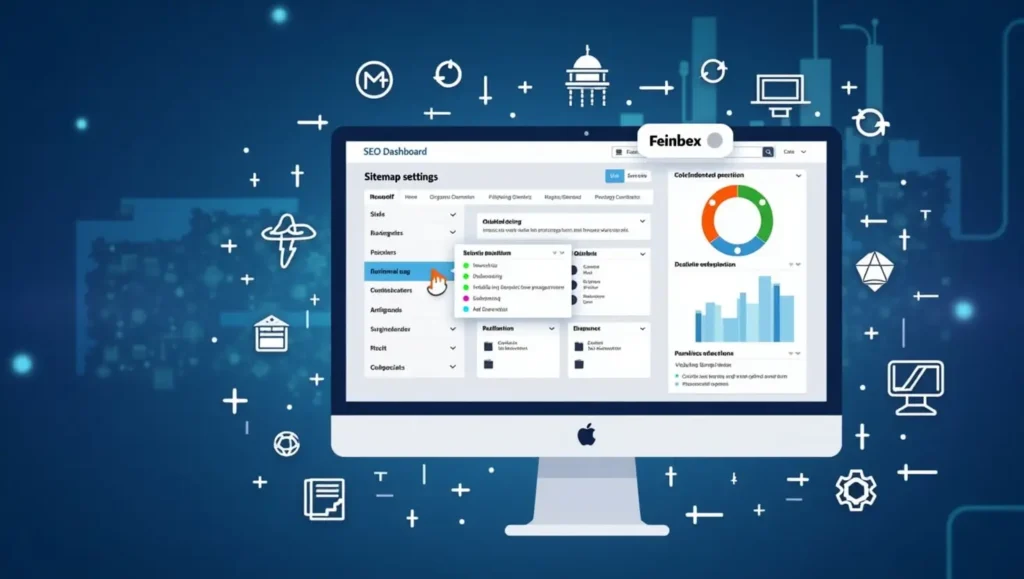In today’s competitive digital landscape, mastering technical SEO with Python can give businesses a significant advantage. Python is a powerful programming language that automates tedious SEO tasks, enhances website performance, and provides deep data analysis. If you’re wondering, can Python be used for SEO?—the answer is a resounding yes! This article explores how Python can optimize technical SEO step by step while addressing common industry questions.
Table of Contents
ToggleWhat is Technical SEO?
Technical SEO focuses on optimizing a website’s backend elements, ensuring search engines can efficiently crawl, index, and rank its pages. Unlike off-page SEO, which revolves around backlinks and external factors, technical SEO includes site speed, structured data, URL structures, and crawlability improvements. Implementing Python in this process helps automate and optimize these crucial aspects effectively.
How to Do Technical SEO Step by Step with Python
1. Automate Website Crawling & Indexing Analysis
Search engines continuously crawl and index websites, but broken links, improper redirects, or disallowed pages can hinder SEO performance. Python’s Screaming Frog SEO Spider API and BeautifulSoup help analyze website structures efficiently.
Example: Extracting and Analyzing Website URLs
import requests
from bs4 import BeautifulSoup
url = “https://example.com”
response = requests.get(url)
soup = BeautifulSoup(response.text, ‘html.parser’)
for link in soup.find_all(‘a’):
print(link.get(‘href’))
Key Benefit: Automates the process of finding broken links and analyzing site architecture for improved indexing.
2. Optimize Site Speed with Python
Site speed is a Google ranking factor. Python helps measure Core Web Vitals and optimize images, scripts, and loading times using tools like Lighthouse API and Pillow for image compression.
Example: Checking Page Load Time
import time
import requests
start_time = time.time()
requests.get(“https://example.com”)
end_time = time.time()
print(f”Page load time: {end_time – start_time} seconds”)
Key Benefit: Identifies slow-loading pages, allowing for precise optimization strategies.
3. Conduct Log File Analysis for Better Crawling
Log file analysis helps track how search engines interact with your site. Python’s Pandas and Matplotlib can process and visualize log data, revealing potential crawl budget issues.
Example: Analyzing Crawl Frequency
import pandas as pd
log_data = pd.read_csv(“access_logs.csv”)
print(log_data[‘User-Agent’].value_counts())
Key Benefit: Ensures Googlebot and other crawlers efficiently navigate your site without unnecessary bottlenecks.
4. Automate XML Sitemap Generation
An updated sitemap ensures search engines can find new and important pages. Python simplifies sitemap generation using lxml.
Example: Creating an XML Sitemap
from lxml import etree
urlset = etree.Element(“urlset”, xmlns=”http://www.sitemaps.org/schemas/sitemap/0.9″)
urls = [“https://example.com/page1”, “https://example.com/page2”]
for url in urls:
url_element = etree.SubElement(urlset, “url”)
loc = etree.SubElement(url_element, “loc”)
loc.text = url
sitemap = etree.tostring(urlset, pretty_print=True, xml_declaration=True, encoding=’UTF-8′)
with open(“sitemap.xml”, “wb”) as f:
f.write(sitemap)
Key Benefit: Automates sitemap updates, improving indexing speed and accuracy.
5. Detect and Fix Duplicate Content Issues
Duplicate content confuses search engines and affects rankings. Python’s FuzzyWuzzy library detects similar content across web pages.
Example: Identifying Duplicate Content
from fuzzywuzzy import fuzz
doc1 = “This is a sample SEO article about Python.”
doc2 = “Python SEO article sample discussing optimization.”
similarity = fuzz.ratio(doc1, doc2)
print(f”Content similarity: {similarity}%”)
Key Benefit: Helps identify and resolve duplicate content to avoid ranking penalties.
6. Improve Internal Linking Structure
Internal linking enhances crawlability and user navigation. Python analyzes existing links and suggests improvements.
Example: Extracting Internal Links
for link in soup.find_all(‘a’):
href = link.get(‘href’)
if href and href.startswith(“/”):
print(f”Internal link: {href}”)
🔹 Key Benefit: Strengthens site structure and improves internal link distribution.
Is Technical SEO off-page SEO?
No, technical SEO is primarily an on-page SEO factor. Unlike off-page SEO, which includes backlinks and social signals, technical SEO focuses on website infrastructure, such as crawlability, speed, and structured data.
Conclusion
Python is a game- changer for technical SEO. From automating audits to optimizing site speed, Python empowers SEO professionals to enhance website performance efficiently. By integrating technical SEO with Python, businesses can boost their search engine rankings, improve site health, and stay ahead of the competition.
Ready to implement Python for SEO? Start experimenting with these scripts today and elevate your technical SEO strategy!



